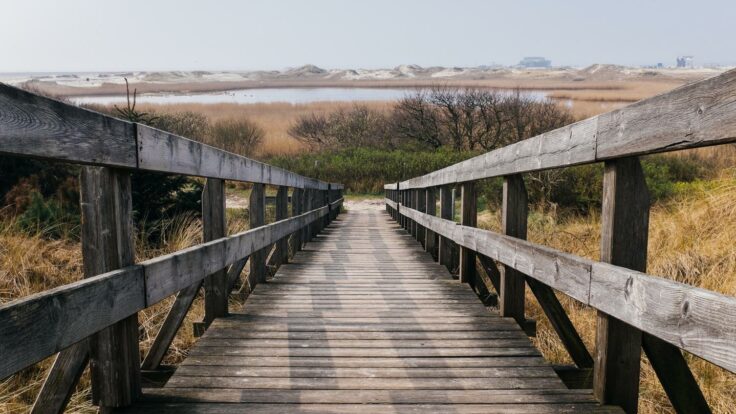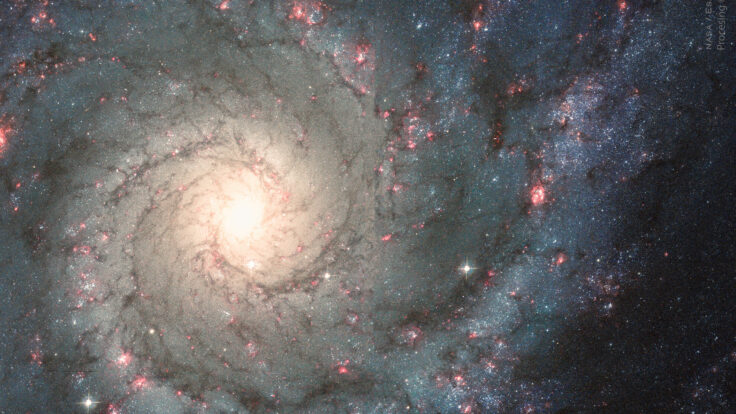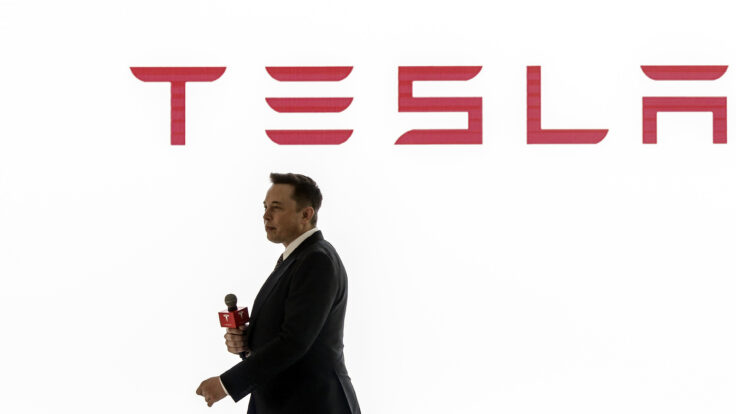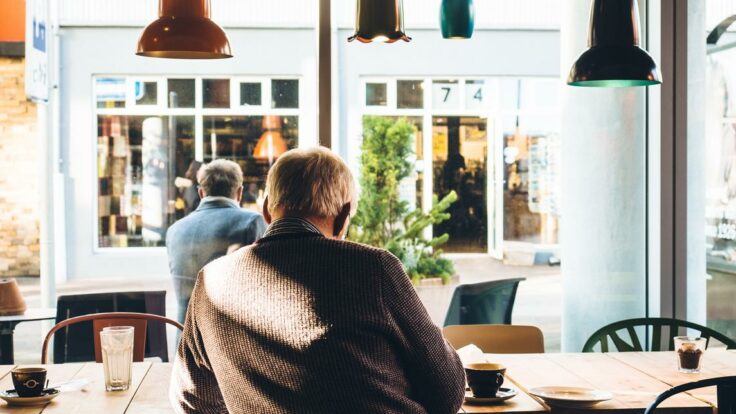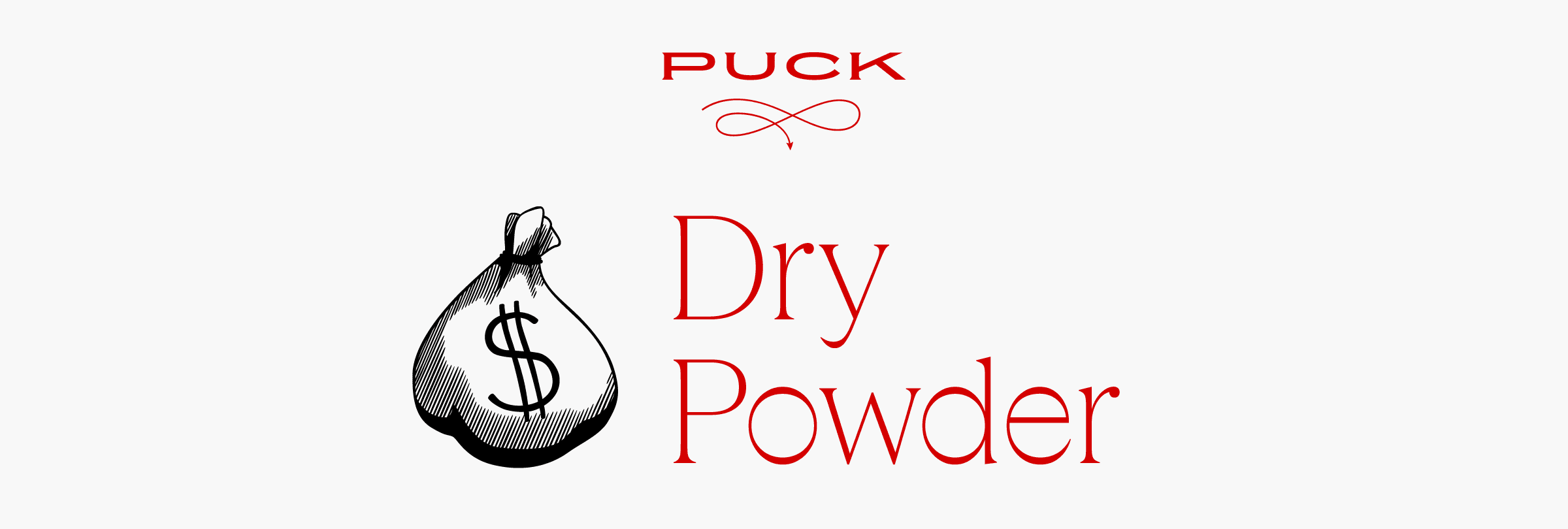 |

|
|
Happy Sunday, and welcome back to Dry Powder. I’m Bill Cohan.
While I did not have the pleasure of flying to Miami this year for Art Basel, my partner Marion Maneker, over at Wall Power, just published an elegant and definitive account of the action—the young buyers injecting enthusiasm into the market; notes on the quality and sales of work this year; a breakdown of the flood of new V.I.P. fairgoers—which I’m excited to share with you. I did, however, have the distinct pleasure of attending Andrew Ross Sorkin’s DealBook conference last week, and my ears perked up at something Sam Altman, OpenAI’s unorthodox and polarizing C.E.O., had to say.
Let’s dive in…
|
|
|
|
Andrew Ross Sorkin’s annual DealBook has become the event of the holiday season—the true heir to the Code Conference and an incredible manifestation of Andrew’s rolodex. As you well know by now, Bezos, Pichai, Bill Clinton, and even Alex Cooper made appearances. The crowd is nearly as august: Jeff Zucker, David Rhodes, Chris Licht, Peter Lattman, Liev Schreiber, and Lance Armstrong, not to mention Dylan Byers and Eriq Garder, both of whom presumably took the Puck Gulfstream into town. Fortunately for me, I was able to enjoy a brisk walk from my place on the west side.
There were endless fascinating moments, of course, but two conversations, in particular, are still on my mind. The first was Andrew’s interview with Sam Altman, the C.E.O. of OpenAI, on the topic of his puny compensation. Altman may be among the co-founders of OpenAI, along with Elon Musk (net worth $353 billion), but he’s not particularly well paid. In fact, his pay is absurdly low, especially given that he’s running a company that has just raised new equity capital at a $157 billion valuation. In 2023, OpenAI paid Altman a very modest $76,000 a year. He also decided to take zero equity in OpenAI. Typically, you might expect a co-founder and C.E.O. to have 10 percent, maybe 20 percent of the ownership of his or her company. Altman, in an era of extreme C.E.O. indulgence, has forgone perhaps $30 billion or more. (Of course, that’s not to say he’s hurting: He’s worth about $2 billion, according to Bloomberg’s Billionaires Index, thanks to various investments, including a $1.4 billion stake in Reddit.)
Altman conceded that there has been “some investor pressure” on him to take equity and, indeed, some investors actually balked at backing OpenAI because he didn’t have skin in the game. Frankly, I don’t blame them. Not only is the recent valuation quite lofty, at $157 billion, but 99 out of 100 equity investors want to make sure a C.E.O.’s economic interests are perfectly aligned with theirs.
Andrew asked Sam if he regretted that decision. “I didn’t want it,” he insisted. “If I could go back in time, I would have taken it, just some little bit, just to never have to answer this question.” That was a cute, flip answer, and it elicited some laughter from the audience. But then he elaborated on his thinking, which I found quite remarkable. “No matter how many times I try to explain to people,” he lamented, they don’t understand “I have the most interesting, coolest job in the world.” He called being C.E.O. of OpenAI his “retirement dream” of how to spend his time—Sam is 39 years old—after “what was a pretty good career” starting a few companies and working at Y Combinator. “This is my childhood dream job,” he continued, referring to working on artificial intelligence. “And getting to sit in the room with the smartest researchers in the world and go on this crazy adventure, that is what I always wanted to do. … And all of the weirdness aside, I think it should at least be understandable that that is worth more to me than any additional money.”
|
|
A MESSAGE FROM GOLDMAN SACHS
|
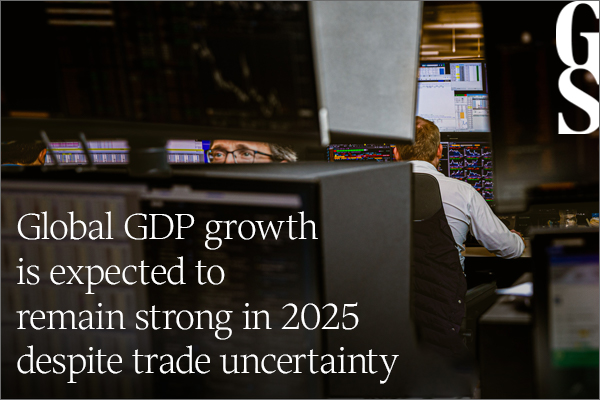
|
|
Goldman Sachs Research expects worldwide GDP to expand 2.7% in 2025.
Factors driving the growth include:
– Rebalanced labor markets
– Slowing inflation
– Normalizing interest rates
Read the 2025 Global Macro Outlook from Goldman Sachs Research.
|
|
|
|
When Sam finished, he got a smattering of applause. But I think this is pretty f’ing unusual, and I can’t think of another C.E.O. doing anything remotely like this. Is there something more to this story that Sam didn’t share, perhaps in the form of lump incentives down the line if various thresholds are reached? If any of you out there know why this decision was made, I would love to hear from you.
I was still thinking about what Sam had said later that day, when Andrew asked Bezos about his compensation in the early days of Amazon, which turned out to be $80,000. Was Bezos the inspiration for Sam’s compensation package? Doubtful. Bezos also took equity in Amazon, at first 20 percent of the company, which was diluted down to an ownership stake of 10 percent, which largely explains his net worth of some $240 billion these days.
Needless to say, Bezos’ cash compensation aside, his significant equity stake is far more typical of C.E.O.s in America—although he never asked for more equity in Amazon, unlike Elon at Tesla. “I just felt, how could I possibly need more incentive?” he told Andrew. “Most founders own big chunks of the company. They’re more like owner-operators. The way they increase their wealth is not by getting more equity. They just want to make the equity they have more valuable. So, I just would have felt icky about it, and I’m directionally very proud of that decision.”
Understandably so, since it’s a decision that has made him the second-richest person in the world. He suggested to Andrew that there should be a new list that, instead of ranking personal fortunes, ranks how much money a founder or entrepreneur had made for others. “Amazon’s market cap is $2.3 trillion,” Bezos said. “Today, I own about $200 billion-ish of it. So if you take $2.3 trillion and subtract out the piece I had for myself, I’ve created something like $2.1 trillion of wealth for other people. That should put me pretty high on some kind of list. And that’s a better list: How much wealth have you created for other people? People like Jensen [Huang] at Nvidia are going to be very high on that list. And that would be pretty cool. Somebody should do that list.”
Take it away, Marion…
|
 |
| Magic City Moves |
| There isn’t one definitive Art Basel Miami Beach experience. Everybody rushes around chasing their own bliss. And while the parties and brand activations might have been toned down—sorry, no Rihanna this year—many attendees said the quality of the artwork on offer was better and the prices were more realistic. |
|
|
|
| Sitting at his booth at Art Basel Miami Beach, David Nahmad, the eldest and leading member of the transatlantic art dealing family, expressed regret for having sold so many of his prized pieces years ago. Many of them have returned to market for prices, he said, that were 10, 20, even 50 times higher. “But you also have to bear in mind that the cash has lost its value,” the patriarch said. “Fifty years ago, a painting worth $100,000 was a lot of money. Today, with $100,000, you can spend one week in a luxury hotel.”
I’m guessing Nahmad wasn’t staying at the Fontainebleau. In his interview with French journalist Judith Benhamou-Huet, he lamented the dwindling supply of impressionist and modern masterpieces. His children wanted to sell, he said, but he preferred to hold on to his art. Benhamou-Huet wondered why an art dealer who didn’t want to sell his high-quality art had come to an art fair. Nahmad responded that the family was there to be seen and also because they were offered works. “To buy is also part of the game,” he intimated to the journalist, “to buy is more important than to sell.”
In the center of his booth was Gerhard Richter’s 725-1, from 1990, which the Nahmads were offering, according to press reports, for $27 million. That’s a lot of money. The Richter abstract market hasn’t been terribly active lately, at least for the larger works like 725-1, which the Nahmads purchased at Sotheby’s in Hong Kong for $25.6 million only two years ago. If the Nahmads are asking only 5.5 percent more for a painting they acquired with an irrevocable bid, the market for high-value works must be pretty tough.
A last-minute snafu prevented me from getting on a plane to Miami on Tuesday morning, but this hiccup gave me the benefit of having time to talk to a slew of dealers, collectors, and advisors to get a true measure of this year’s shows. And given the distractions of attending—the traffic and the dinners and the overall sense of wondering if you shouldn’t be somewhere else—I may have ended up with a better read on what’s actually going on in the market. On the one hand, there were plenty of reports that the fair had gone well, and that smart, young buyers were giving the market the energy and enthusiasm it needs; on the other, there was still a sense that the market was directionless and adrift.
|
|
|
| While the Nahmads’ Richter may have evidenced uncertainty at the top, the vibe at NADA suggested the opposite within the lower bands of the market. NADA, the premier fair for minor league galleries, is where collectors and advisors go to scout talent and buy in a less pressured atmosphere than the convention center. NADA’s dealers aren’t spending money on P.R. firms to circulate sales reports. Everyone I spoke to agreed that business seemed good there.
Minor leagues doesn’t mean minor talent, of course. NADA’s appeal is that the work has not yet climbed the price curve at the bigger galleries with broader reach. My friend Jeff Magid, who recently started a series of videos on art world personalities on TikTok and Instagram, buys the work of a lot of emerging artists. He was encouraged by some collectors in their early 30s he saw buying work at NADA that they had learned about through their network. These newer, younger buyers are the lifeblood of the market. Most of the works discussed in the press, and inevitably seen on Instagram, are priced in the low five figures. The folks in this Instagram reel have just bought a work in the mid-four figures.
|
|
|
| It takes a lot of this kind of buying to really register in the market. For those of us paying close attention, though, this has been the story of the last two years. The top of the market has gone quiet, as Nahmad knows, but the low end remains quite strong. (The middle of the market, however, is upside down; we’ll get to that shortly.) We can see this in auction data, and economist Clare McAndrew reinforced that notion this autumn in her report for Art Basel on collectors and gallery sales. |
|
|
| Had I been in Miami on Tuesday night, my next stop would have been ICA Miami’s opening. Lucy Bull, Keiichi Tanaami, and Marguerite Humeau were getting the bulk of the attention before the debut, but judging from the response on Instagram, Ding Shilun was the dark-horse attention-grabber. It doesn’t hurt that it’s impossible to get one of Ding’s works these days. When I checked in with ICA director Alex Gartenfeld, whom I wrote about on Tuesday, he said the museum had a solid crowd, including a number of out-of-town board members, all supporting the shows enthusiastically.
From the ICA, it’s a short ride or a decent walk to the Rubell Museum, where Bank of America held its annual party. One of the real hazards of Art Week is navigating Miami’s brutal traffic. I got texts from friends making the trip from Miami Beach to the party in Allapattah who were trapped in Ubers for up to two hours. Even with the traffic, my friend Vincent Thompson, a private banker at BofA, said the event seemed “more effervescent this year” and that the venue was noticeably fuller, which is saying something because I recall that the party was pretty packed last year.
The Rubells put on a show of new works and art by their artist in residence, Vanessa Raw, but the draw is always the depth and audacity of their collecting. One of the first rooms off the central, upwardly sloping hallway— which is filled with the 700 stainless steel spheres that constitute Yayoi Kusama’s 1966 work Narcissus Garden—featured artists from the 1980s. Works from Luis Frangella, Judy Glantzman, Stephen Lack, and Rick Prol were all being shown adjacent to their far more famous peers Basquiat, Haring, and David Wojnarowicz.
Displaying work by famous artists like Basquiat and Kusama (the Rubells have two infinity rooms on the other side of the hallway) is obviously a flex. But showing work by forgotten talent and re-engaging with choices you made decades ago, even at the risk of exposing your past mistakes, is what real collectors do—never give up on the art.
|
| Just Relocated Finance Guys? |
|
| The next morning was the fair itself. The sales reports were pretty solid, as Art Basel C.E.O. Noah Horowitz had told me. Several advisors remarked that the quality of the work the galleries brought this year was just better. Horowitz told me the visitor numbers were tracking close to last year’s, but there was also an influx of new names on the V.I.P. list for entry on the first day.
About a third of the V.I.P.s, who are nominated by museum boards, attending galleries, and other partners, were new this year, which is a much higher percentage than before the pandemic. Attendance from Brazil and Mexico was up, according to Horowitz, with Brazilians making up the third-largest national group among the V.I.P.s behind the U.S. and the U.K.
I asked Horowitz if he had seen any appreciable effect from the migration of finance firms to the city. Citing a cocktail party he was speaking at on Friday night, hosted by a young female entrepreneur in the finance space, he said the difference between the local attendees today and 10 years ago was like night and day. The South Florida participants at Art Basel—not just from Miami but extending all of the way up to Palm Beach—were now younger and more worldly, and the whole collecting scene is more dynamic, he told me. And, he said, it’s not just people from finance who have moved south.
For quite some time, Magid has been pointing out something I’ve heard from art advisors and others about the middle of the market at the main fair. In the last two years, the market for young artists has turned upside down: Primary prices for a wide range of recently established artists are now well above secondary market prices. They’re not talking about the artists at NADA this year, but the ones who shot to fame a few years ago and were picked up by bigger galleries, who raised their primary prices to match the frenzied secondary rates of the pandemic-era art market.
Jeff pointed to one older artist whose new work was on his primary gallery’s stand at Art Basel, and sold for prices that he considered too high. Meanwhile, earlier work, which Magid believed was more important and valuable, was available on the secondary market for much cheaper. You might think that would be a great buying opportunity for confident collectors—and it is. But markets are not as rational as we pretend, and there’s no easy remedy for the current dislocation. It’s hard to back down an artist’s primary prices. But what Magid, who is very attuned to the market, took away from the fair is that “good works at good prices, sell.”
My last conversation Friday afternoon was with art advisor Sierra Love, who was on her way to the airport to catch a flight back to L.A. In past years, she’d had clients who would arrive on Friday to attend parties and confer with her on potential purchases she had scouted for them earlier in the week. This year, those clients stayed home—but that doesn’t mean she wasn’t buying for them. In fact, another collector mentioned galleries that had done business primarily with collectors not at the fair. The event was merely a catalyst for decision-making.
Love thought Miami was more productive for her clients than London or Paris had been. Galleries, she felt, had brought better works at lower price points. That said, there was no sense of urgency to buy. The political and financial moment now favors the art market—the election is resolved, and there are no obvious financial headwinds for the kinds of people who buy art—but the cultural moment, the zeitgeist, as she put it, favors waiting. There’s no sense of FOMO surrounding any particular idea, movement, style or artist. And, so, we wait… until a new organizing principle unleashes appetites and brings in buyers off of the sidelines.
|
|
|
|
| FOUR STORIES WE’RE TALKING ABOUT |
 |
| Hollywood P.R. Wars |
| Unraveling a once-mighty P.R. firm’s suit against defectors. |
| MATTHEW BELLONI |
|
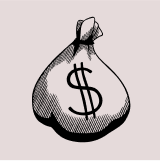 |
| Blazy-Chanel News |
| Behind the scenes of Matthieu Blazy’s exit from Kering. |
| LAUREN SHERMAN |
|
 |
|
 |
| The Hegseth Sitch |
| Plus, the implications on other Trump appointees’ chances. |
| TARA PALMERI |
|
|
|
|
|
 |
|
|
|
Need help? Review our FAQs
page or contact
us for assistance. For brand partnerships, email ads@puck.news.
|
|
You received this email because you signed up to receive emails from Puck, or as part of your Puck account associated with . To stop receiving this newsletter and/or manage all your email preferences, click here.
|
|
Puck is published by Heat Media LLC. 227 W 17th St New York, NY 10011.
|
|
|
|








